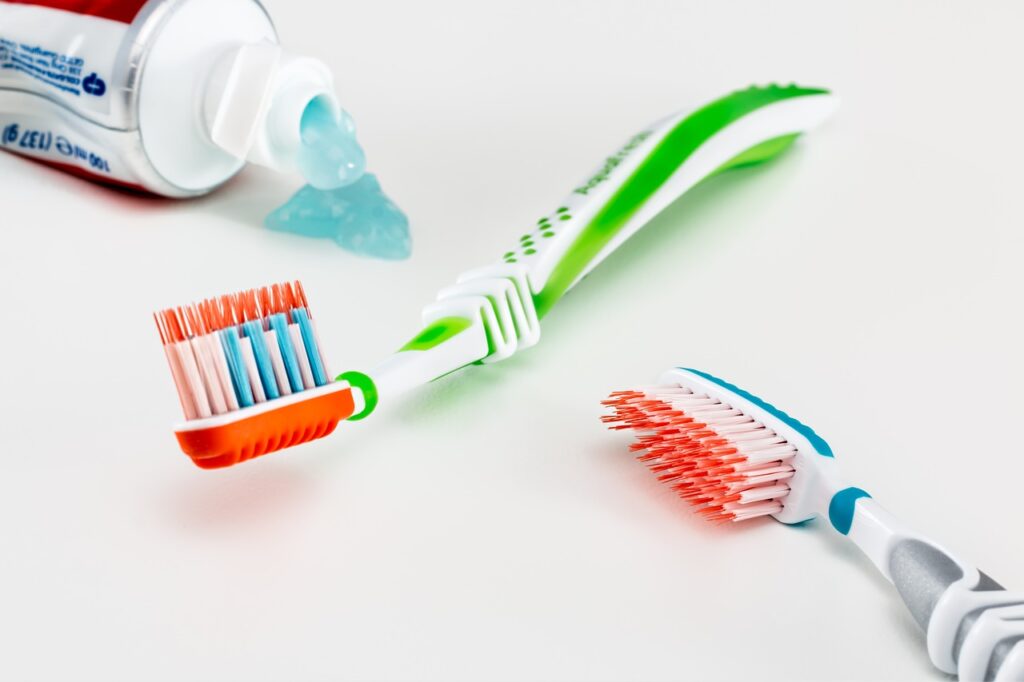Is your toothpaste expired? Here’s everything you need to know before squeezing out toothpaste.

When it comes to personal hygiene products, toothpaste occupies a special place among all daily necessities. It makes oral hygiene a breeze. However, have you ever wondered if that tube of toothpaste sitting in your bathroom cabinet has an expiration date? Does toothpaste expire, or can you safely squeeze it onto your brush until you can no longer squeeze it out? It’s true that most of us empty the tube before the expiration date, but there are other things to consider. In this article, we will help you know whether you can use toothpaste before the expiration date or not. Read on!
1. The myth about the expiration date
You may have noticed a tiny symbol on the rim or back of your toothpaste tube that resembles an open jar with a number and the letter “M” inside. This symbol represents period after opening (PAO), which indicates how long the toothpaste remains at its optimal quality after it has been opened. However, this does not mean that the paste expires after this time.
2. Disassembly according to expiration dates
Surprisingly, toothpaste does not have an expiration date like food. Most toothpastes contain ingredients such as fluoride, which act as preservatives, extending shelf life. According to the American Dental Association (ADA), if toothpaste is stored properly in a cool, dry place and away from direct sunlight, it will remain safe and effective beyond the expiration date (1).
3. Quality over time
While toothpaste does not necessarily deteriorate or become harmful, its quality may deteriorate over time. The taste may weaken, the consistency may change, and the effectiveness of fluoride may decrease. It may simply lose its freshness and potency.
4. Check the changes
Visual and sensory signs will help you determine if your toothpaste is expired. Notice any changes in color, texture, or smell. If your pasta has an unusual smell or taste, it may be time to say goodbye to it. A grainy texture or dried-out appearance may also indicate that your teeth’s best days for brushing are behind you.
5. Special cases and natural alternatives
Some types of toothpaste may have a shorter shelf life due to the lack of preservatives. Additionally, natural toothpaste may have a shorter shelf life. It is best to study the packaging or manufacturer’s recommendations.
6. Environmental protection
Factors such as exposure to air, heat or moisture can affect the shelf life of toothpaste. Close the tube tightly after use and do not leave it in stuffy bathrooms – this will help extend the shelf life. Storing the paste in a cool, dry place will extend its effectiveness for a longer period.
Practical tips for use
To maximize the effectiveness and longevity of your toothpaste, use the correct amount. A small pea-sized amount of paste is enough for a thorough cleaning. By squeezing out excessive amounts, you not only waste product, but also expose the toothpaste to air, which can cause quality to deteriorate faster.
1. Look behind the phone
In addition to checking the condition of your toothpaste, keep your toothbrush clean and stored. Regularly replacing your toothbrush every three to four months or after illness ensures optimal oral hygiene. Properly rinsing and air-drying your toothbrush after use prevents bacterial growth and maintains its effectiveness.
2. Make your own toothpaste
Baking soda is a great option due to its mild abrasiveness and ability to neutralize acids in the mouth, fighting plaque and stains. Combined with coconut oil, known for its antibacterial properties, it creates a simple paste that not only cleanses but also nourishes your gums and fights harmful bacteria.
Another fantastic ingredient is activated charcoal. It effectively brightens teeth when used sparingly. Essential oils such as peppermint, tea tree or clove oil not only provide a refreshing aroma, but also have antibacterial and anti-inflammatory properties, promoting overall oral health. Additionally, a mixture of calcium powder and bentonite clay offers a mineral-rich alternative that helps remineralize enamel and promote dental health.
However, before using any alternative option, do your research and be aware of sensitivities or allergies. While these natural DIY toothpaste alternatives offer promising benefits, it is recommended to consult with your dentist to ensure their compatibility with your specific oral health needs. Using these alternatives can be an enjoyable step towards more natural and personalized dental care.
Although toothpaste does not have a specific expiration date, it is important to monitor its quality over time. Proper storage and judicious use will allow you to get the most out of your toothpaste. So feel free to squeeze out the toothpaste and practice good oral hygiene!